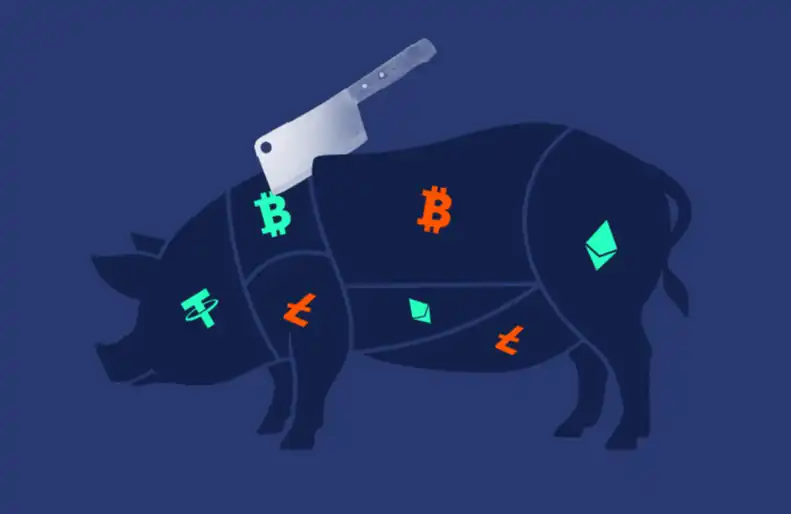「Engineer's Spirit」: Ant Group Leads the Way in Hong Kong
Any city that has once thrived highly needs to take a deep breath, and Hong Kong is a representative.
It was once synonymous with dreams and prosperity: in 2006, ICBC set a nearly $19 billion global record with its Hong Kong IPO, and in 2019, 160 IPOs raised over $40 billion, ranking first globally; Central's Grade-A office rents remained the most expensive globally for many years, with Victoria Harbour's lights reflecting the busiest trading floor in Asia, this city once controlled East Asia's most important capital nerve.
But in the past few years, this engine has begun to slow down.
In 2023, the Hong Kong Stock Exchange raised only HK$46.3 billion through IPOs, hitting a nearly two-decade low. At the same time, Hong Kongers emigrated, private residential prices fell year after year, office vacancy rates approached the historical peak of 17.5%, and small and medium-sized brokerages consolidated, with some institutions relocating to prepare for the next cycle.
For too long, it has been too crowded, too full, and too expensive here, but the foundation and resilience of this city, Hong Kong, remain: the capital market remains open, the rule of law system is mature enough, and institutional experience can withstand the polishing of complex situations.
A deep breath has led to the reflow of resources, freeing up a rare buffer zone for the city.
IPO activity began to rebound in 2024, with many new consumer and technology companies restarting their plans to list in Hong Kong. In the first half of 2025, the amount raised by IPOs on the Hong Kong Stock Exchange exceeded HK$100 billion, helping Hong Kong return to the top of global fundraising after four years; as of June 30, the Hang Seng Index led major stock indices globally with a 20% gain, and Southbound funds net purchased HK$725.973 billion year-to-date, reaching 90% of the full-year 2024 total, significantly strengthening the "magnetic effect." Web3 is right in the middle of this new cycle.
Since 2022, "developing the Web3 ecosystem" has been successively included in the financial budget and policy address. Unlike what the Hong Kong government expected, reality has staged carefully designed arbitrage games. Especially after the JPEX incident, even cha chaan teng owners have started advising people, "Don't believe in such things anymore."
However, the Hong Kong government understands the ways of financial transactions. Licenses, sandboxes, regulatory declarations... Step by step, a Web3 ecosystem oriented towards real value and compliance is being laid out in Hong Kong.
At the same time, a rare Chinese team rooted in engineering logic is quietly building a bridge for real-world assets to connect to the blockchain. Starting from the digital verification of off-chain assets, they are redefining how Web3 should land in reality, aligning perfectly with the Hong Kong government's vision.
They are Ant Group.
Turning "Narrative" Back into "Engineering"
In 2016, Shanghai hosted the Ethereum developer conference, with the venue packed and the atmosphere heated. At that time, this industry was not yet called Web3. The speakers on stage waved laser pointers, and the slides were filled with expectations for the future of the industry. The crowd below was restless, their eyes ablaze, but no one knew if the theoretical discussions would materialize into practical applications.
A female developer named Yan Ying, who had already been immersed in blockchain technology research at that time, recalled the conference, saying, "We felt the faint light was in the distance, but didn't know where the path was. We were here to pave the way."
Over a year later, driven by her passion and dedication to this industry, she joined AntChain and became the Chief Scientist of Ant Group. From the beginning, they decided to take the most unconventional path.
At that time, the crypto market was hot, and many projects could secure excessive funding with just a slick set of slides. "100x coins" and "1000x coins" piled up the illusion of overnight riches. Their choice went against the trend of the "coin circle."
In 2018, after establishing the infrastructure, AntChain opened a free trial to enterprises. The demand surged, and the backend data excited the team.
After a one-year trial, the commercial version was launched in 2019, and the once blazing on-chain data volume significantly shrunk.
"People were unwilling to pay for it," Yan Ying said calmly yet firmly.
It was a bucket of cold water, but also a healing potion.
Ant Group realized that if they couldn't create real value for enterprises, all the hype would be an illusion. Since then, they became more focused on how to make blockchain technology meet the real needs of enterprises.
Looking back on this journey, Yan Ying said that every line of code was about solidly solving problems: Data structure can't handle it? Let's refactor the index; Performance not enough? Let's break down the execution module; Enterprise customers need privacy protection? Let's introduce ZK.
Unlike most practitioners, they decided to turn the narrative back into engineering, which also became the starting point for all of Ant Group's technological layout thereafter.
Let's Go to Hong Kong
In January 2023, the Hong Kong Monetary Authority released the "Stablecoin and Cryptocurrency Asset Regulatory Framework Discussion Paper," and in the same month, the VASP provisions officially came into effect, symbolizing the virtual asset industry's integration into the mainstream regulatory framework.
For many teams, this was just a policy document; but for the Ant Group team, it was like a flare, shattering the silence of the long night.
At that time, the mainland had just emerged from the pandemic, cities had not fully recovered their vitality, yet the immigration hall in Hangzhou was already lined up in the early morning. It was the first day of the resumption of permit processing, and the Ant Group team arrived at the scene early in the morning to queue up for processing Hong Kong and Macau travel permits. They lined up from 7 a.m. in the morning until 9 p.m. at night.
A few days later, they received their Hong Kong and Macau travel permits, without any hesitation, immediately preparing to set off for Hong Kong. Early the next day, they boarded a flight to Hong Kong. Taking off from Beijing Daxing, it was the first flight of China Southern Airlines to resume the "Beijing-Hong Kong" route after the pandemic. There was fanfare at the boarding gate, colorful flags flying, and even on-board performances and media interviews.
It was a symbol of restarting amidst the hustle and bustle, as well as a lively event echoing with the times.
Upon landing in Hong Kong, they immediately shuttled around Hong Kong Island. Meeting with law firms, visiting think tanks, coordinating with regulators, understanding policy implementation details, the team was not superstitious about the policy; they only cared about one thing: whether this policy window was a real opportunity or just a gimmick.
After communicating with various parties, they quickly made a judgment: this thing could work.
After confirming that the policy window in Hong Kong had indeed opened, Ant Group's tech team immediately embarked on a new round of system building. Their proprietary blockchain technology landing in Hong Kong? This made them feel a long-lost sense of clarity and excitement, like the first planting in spring.
Ant Group had laid a solid foundation, having prepared in infrastructure for many years. Over five years, they meticulously built their infrastructure, rewriting the consensus mechanism, restructuring the execution engine, account model, and striking a balance between chain computation, storage, and privacy modules.
Finally, a full-process technical solution covering from tokenized assets to tokenized funds was presented in front of Hong Kong.

They once thought creating a blockchain was simple, but later realized: to make it commercially viable, it meant that every technical module had to undergo continuous reengineering along with the business. From supply chain finance to IoT applications, and then to the high-concurrency challenge of the data platform Whale Exploration, every scenario forced this chain to evolve time and time again.
"In the current system, there is almost no trace left of the old code from 2018," Yan Ying sighed.
Open Ecosystem, Embracing a New World
Technological upgrades are just the first step. In order to allow their ecosystem to develop and truly deserve the name "ecosystem," Ant Group has decided to transition from their previous consortium chain framework to being Ethereum-compatible, expanding comprehensively in the L1 and L2 underlying chain ecosystem.
Yan Ying told BlockBeats, "Currently, 80-90% of the ecosystem is built around Ethereum, and they are truly outstanding." She said that embracing and integrating into this ecosystem is a crucial choice to drive a wider adoption of Web3.
Indeed, from an ecosystem perspective, no matter how good the technology is, it is meaningless if no one can use it. Therefore, Ant Group has developed a browser, adapted to the EVM, optimized the RPC interface, and built their L2 public chain, Jovay.
Jovay is a Layer 2 public chain designed for financial-grade applications, with a unique three-stage hierarchical confirmation mechanism, supporting 100,000 TPS throughput and millisecond-level response times.
Jovay's high performance and low latency are achieved through a transaction execution phase that utilizes a fully pipelined parallel execution engine, dividing transaction processing into multiple independent execution units for parallel scheduling. Alongside a dynamic load balancing mechanism, it possesses cluster-scalable performance features, significantly reducing response latency. The security is enhanced by TEE and ZK's various proof systems, with a comprehensive end-to-end intelligent development toolset that integrates AI-assisted contract writing, debugging, performance analysis, and security audits, providing smart support from code to deployment.
However, Ant Group does not believe that "performance" is synonymous with "capability." To bring a chain into the real world, it must be able to bear the weight of business.
Five years ago, they began attempting to connect IoT using blockchain, turning power stations, solar panels, and sensors into trusted data sources. They equipped these devices with hardware encryption modules, allowing data to be signed before being uploaded to the chain, generating a unique on-chain fingerprint.
This early accumulation found a real foothold in Hong Kong.
Ant Group used the device verification system that had been successfully implemented in the consortium chain system in the past to upload real-time signed operational data of assets. Through on-chain structuring, packaging, and mapping, they supported companies like Longi, GCL, and JA Solar in completing RWA issuances, creating the world's largest new energy RWA equipment network with over 15 million new energy devices currently connected.
They did not opt for the easier "financial RWA," but instead chose the most difficult path, tackling a tough problem first, establishing a complete set of processes and samples to make RWA the first bridge between the real world and the chain.
Ant Group values the opportunity in Hong Kong. In their view, RWA is a key factor in building confidence in Web3 among regulators, financial institutions, government agencies, and society.
“Our strategic focus on solving real-world problems has never changed,” said Yan Ying. “Today, as Ant Group targets a more diverse market, we must have a more open mindset.”
Ant Group has chosen to no longer rely on the “Ant” brand, which is perceived as a “Web2 tech giant” in people’s minds, and has named its L2 with a brand-new name, attempting to engage in this global narrative with a more native approach.
Alibaba is a label of Hangzhou. Its emergence has changed the city’s industrial structure, narrative language, and even citizens’ imagination of the future. Will Ant Group become the next label of Hong Kong?
“We are working hard,” Yan Ying said. “There is no reason why Ant Group should not be one of the first companies to break out. I am quite confident.”

Give Web3 Another Chance, Where Speculation Is No Longer the Primary Use Case
On a clear evening after the rain, the Causeway Bay MTR station is crowded with people. Under the Central office buildings, a group of suit-clad employees are all looking down at their phones, each busy with their own lives, unaware that the city they live in is telling a brand-new story.
Hong Kong does not aim to create a Crypto version of Las Vegas. The previous Web3 era focused more on token prices and narratives, but next, it must be built on real-world assets. Only when diverse assets like gold, precious metals, and renewable energy are put on-chain, can Web3 truly become the foundational infrastructure of the financial system.
RWA + stablecoin is a value carrier, a medium of exchange, and this is the turning point.
Hong Kong understands how assets are structured and how rules protect transactional trust; it knows how capital operates and is connected to the global financial network. In the past, it absorbed USD liquidity through offshore systems, and now it might also map and circulate real-world assets through blockchain, achieving global circulation through stablecoins.
Not every place is suitable for telling this story, but perhaps Hong Kong really can.
Welcome to join the official BlockBeats community:
Telegram Subscription Group: https://t.me/theblockbeats
Telegram Discussion Group: https://t.me/BlockBeats_App
Official Twitter Account: https://twitter.com/BlockBeatsAsia


 Forum
Forum Finance
Finance
 Specials
Specials
 On-chain Eco
On-chain Eco
 Entry
Entry
 Podcasts
Podcasts
 Activities
Activities
 OPRR
OPRR









